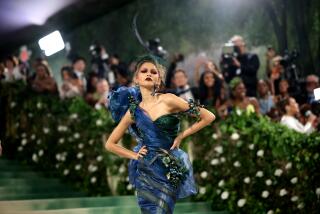Camerata Nordica plays bravely against the chilly night
When musicians want to expand Beethoven’s cycle of nine symphonies, they sometimes turn to his late string quartets on the grounds that there is more music in them than a mere quartet can extract.
Usually it is the “Grosse Fuge,” the huge, visionary original finale for the Opus 130 Quartet, that gets the blown-up string orchestra treatment. Camerata Nordica may be the first string orchestra to have recorded all five quartets (minus the replacement finale of Opus 130) for a three-CD box (Altara). The undertaking was brave, and the conductorless Swedish ensemble made it through the cycle with a lot of fire and pluck.
The same could be said for the group’s performance of the Opus 130 quartet (with the “Grosse Fuge”) in its Los Angeles debut at the John Anson Ford Amphitheatre on Thursday night.
The arrangement was by the ensemble’s associate director and leader, Terje Tonnesen, and it’s not quite a straight multiplication for 14 instruments, since he sometimes calls for “intimate” passages to be played by solo instruments, concerto grosso style. Near the end of the fourth movement, he has just a string quartet playing the graceful tune -- and the Cavatina becomes, in effect, a violin concerto for himself and the rest of the group.
Live, this is not one of the more polished string ensembles; the outdoor chill probably didn’t do its on-and-off intonation much good either. Yet there is an edgy zest and a fondness for sudden dynamic changes in the musicians’ sound, and they are winning ambassadors for music of the North as well as late Beethoven.
With program switches occurring up to the last minute (in the rueful words of its spokesman, “as usual”), Camerata Nordica opened its all-Scandinavian first half with a pleasing if formulaic Ouverture and Violin Concerto in F minor (with Tonnesen as soloist) by Johan Helmich Roman -- rightly called the “Swedish Handel.”
An orchestrated Mesto movement from Wilhelm Stenhammar’s String Quartet No. 1 and Johan Svendsen’s Romance in G for Violin and Orchestra warmed up the sound considerably after the rather parched period-style playing in the Roman.
The group displayed an affectionate feeling for the rhythms in Nielsen’s Little Suite -- his Opus 1, a lovable piece, though with few of the quirks and trademarks of later Nielsen. Grieg’s heart-rending “The Last Spring” was the encore.
More to Read
The biggest entertainment stories
Get our big stories about Hollywood, film, television, music, arts, culture and more right in your inbox as soon as they publish.
You may occasionally receive promotional content from the Los Angeles Times.






